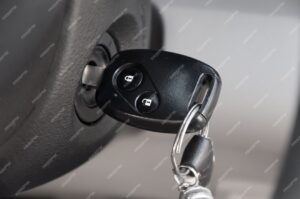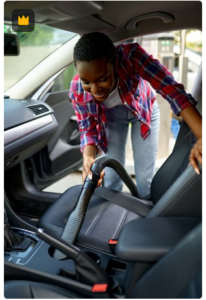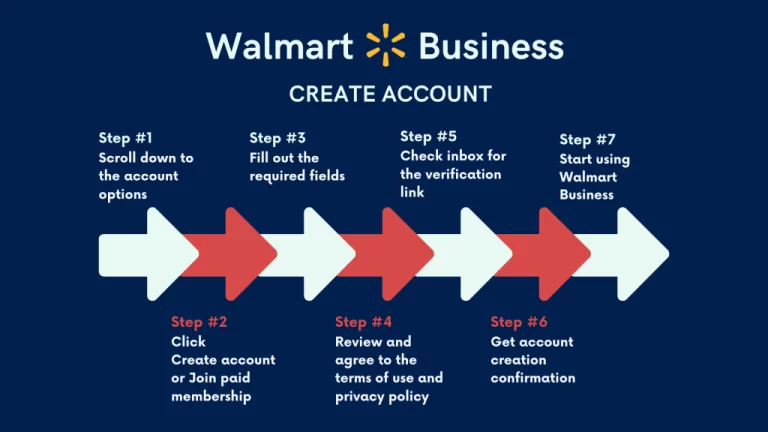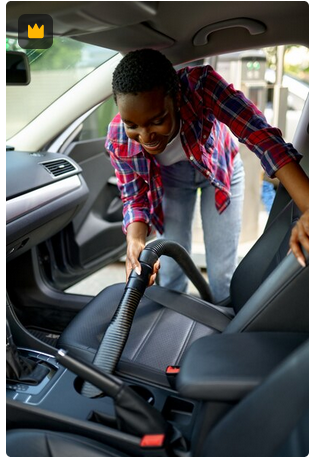10 Essential Tips to Avoid a Car Accident and Stay Safe on the Road
Car accidents can be traumatic experiences that can lead to serious injuries or even death. They are often caused by a combination of factors, including distracted driving, speeding, and reckless behavior. However, with the right knowledge and habits, accidents can be avoided. By following some simple guidelines, you can significantly reduce your risk of getting into an accident while driving. In this post, we will provide you with ten essential tips to help you stay safe on the road and avoid car accidents. From maintaining your vehicle to staying focused on the road, we’ve got you covered. So, buckle up, and let’s get started on keeping you safe while driving!
1. The importance of safe driving and avoiding car accidents
Safe driving and avoiding car accidents should always be a top priority when you hit the road. It’s not just about reaching your destination; it’s about ensuring the safety of yourself, your passengers, and other road users.
First and foremost, always remember to buckle up. Wearing your seatbelt is the simplest and most effective way to protect yourself in case of an accident. It’s a small action that can make a big difference.
Maintaining a safe distance is another crucial aspect of safe driving. Keep a safe following distance from the vehicle in front of you to allow for enough time to react and brake if necessary. This will help prevent rear-end collisions and minimize the risk of accidents.
Being aware of your surroundings is essential. Pay attention to the road, traffic signs, and signals. Avoid distractions such as using your phone, eating, or engaging in other activities that take your focus away from driving. Remember, a split second of distraction can have serious consequences.
Obeying traffic laws and speed limits is non-negotiable. Speeding increases the likelihood of accidents and reduces your ability to react in time. Always drive within the posted speed limits and adjust your speed according to road and weather conditions.
Another important tip is to use your indicators properly. Signaling your intentions allows other drivers to anticipate your moves and helps prevent collisions. Whether you’re changing lanes, turning, or merging, always use your indicators to communicate your intentions.
It’s also crucial to be cautious at intersections. This is where many accidents occur. Always approach intersections with caution, look both ways, and be prepared to yield if necessary. Don’t assume that other drivers will follow the rules; always be prepared for unexpected actions.
Maintaining your vehicle’s condition is equally important. Regularly check your tires, brakes, lights, and other essential components. Proper maintenance ensures that your vehicle is in optimal condition, reducing the risk of mechanical failures that could lead to accidents.
Lastly, avoid driving under the influence of alcohol or drugs. Impaired driving is a leading cause of accidents and fatalities. If you plan on drinking, designate a sober driver or use alternative transportation options.
Remember, safe driving is not just about your own actions but also about being considerate and respectful towards others on the road. By following these essential tips, you can minimize the risk of accidents, protect yourself and others, and enjoy a safer journey every time you drive.
2. Regular maintenance and inspections for your vehicle
Regular maintenance and inspections are crucial for keeping your vehicle in optimal condition and ensuring your safety on the road. Neglecting routine maintenance can lead to mechanical failures or other issues that may increase the risk of an accident.
To start, make sure to follow your vehicle manufacturer’s recommended maintenance schedule. This includes regular oil changes, tire rotations, and air filter replacements. By keeping up with these basic maintenance tasks, you can extend the life of your vehicle and reduce the likelihood of unexpected breakdowns.
In addition to routine maintenance, it’s important to inspect your vehicle regularly. Check the tire pressure, tread depth, and overall condition of your tires. Bald or underinflated tires can affect your vehicle’s handling and increase the risk of a blowout. Inspect your brake pads and ensure they are in good condition to maintain proper stopping power.
Furthermore, pay attention to any warning lights or unusual noises coming from your vehicle. These can be indicators of potential issues that need to be addressed promptly. Don’t ignore them, as they can escalate into major problems or contribute to an accident.
Lastly, don’t forget to regularly check your lights, including headlights, taillights, brake lights, and turn signals. Properly functioning lights are crucial for visibility, especially during adverse weather conditions or nighttime driving.
By prioritizing regular maintenance and inspections, you can significantly reduce the chances of experiencing a mechanical failure or other issues that could lead to a car accident. Your safety and the safety of others on the road should always be a top priority.
3. Follow traffic rules and signs
Following traffic rules and signs is crucial for avoiding car accidents and ensuring road safety. These rules and signs have been put in place for a reason – to regulate traffic flow, prevent collisions, and protect drivers, passengers, and pedestrians. By adhering to these guidelines, you not only reduce the risk of accidents but also contribute to a harmonious and organized road environment.
One of the most basic rules to follow is obeying speed limits. Speeding not only increases the chances of losing control of your vehicle but also reduces your ability to react quickly to unexpected situations. Always be mindful of the posted speed limits and adjust your driving accordingly.
Additionally, it’s important to use turn signals when changing lanes or making turns. Signaling your intentions allows other drivers to anticipate your actions and adjust their driving accordingly. This small act can prevent potential collisions and ensure a smoother traffic flow.
Another crucial aspect is adhering to traffic signals such as stop signs, traffic lights, and pedestrian crossings. These signals are designed to regulate the right of way and prevent conflicts between different road users. Failing to stop at a red light or stop sign can have severe consequences, not only for yourself but for others as well.
Moreover, it is important to respect the designated lanes and markings on the road. Stay within your lane, avoid unnecessary lane changes, and only overtake when it is safe and legal to do so. These guidelines help maintain order on the road and minimize the risk of side-swipe or head-on collisions.
Lastly, always be mindful of pedestrians and prioritize their safety. Yield to pedestrians at crosswalks and always be cautious when driving near schools, parks, or residential areas where children may be present. Remember, pedestrians have the right of way, and it is your responsibility as a driver to ensure their safety.
By following traffic rules and signs, you contribute to a safer road environment for everyone. It may seem simple, but these small actions can make a significant difference in preventing accidents and ensuring the well-being of all road users.
4. Avoid distractions while driving
In today’s fast-paced world, distractions are everywhere and can easily divert our attention from the road. It is crucial to avoid any form of distraction while driving to ensure your safety and the safety of others on the road.
One common distraction is the use of mobile phones. Texting, making calls, or even just glancing at your screen can take your eyes off the road and increase the risk of an accident. It is best to keep your phone out of reach or use hands-free devices if you need to make a call.
Another major distraction is eating or drinking while driving. Trying to juggle a sandwich or a cup of coffee can lead to a loss of focus on the road, making it difficult to react quickly to changing traffic conditions.
Engaging in intense conversations with passengers can also divert your attention. It is important to remember that your primary focus should always be on the road. If a conversation becomes too distracting, politely ask your passengers to give you some space to concentrate.
Other distractions such as adjusting the radio, using a GPS, or even grooming yourself can also contribute to accidents. It is crucial to set up your GPS and adjust any settings before you start driving. If you need to make any changes, pull over to a safe location.
Lastly, it is essential to avoid daydreaming while driving. Our minds can wander off, especially during long drives, but it is vital to stay focused on the task at hand. If you find yourself becoming distracted by your thoughts, try to refocus your attention on the road.
By being aware of these distractions and actively avoiding them, you can significantly reduce the risk of accidents and ensure a safe journey for yourself and others. Remember, your safety should always be the priority when you are behind the wheel.
5. Keep a safe distance from other vehicles
Keeping a safe distance from other vehicles is one of the most crucial tips to avoid a car accident and ensure your safety on the road. Maintaining a safe following distance provides you with ample time to react and make necessary maneuvers in case of sudden stops or emergencies.
The general rule of thumb is to maintain a minimum of a two-second gap between your vehicle and the one in front of you. However, it’s essential to adjust this distance depending on the weather conditions, road conditions, and your speed. In adverse weather conditions such as rain, snow, or fog, it’s recommended to increase the following distance to at least four seconds.
By keeping a safe distance, you provide yourself with a buffer zone that allows you to anticipate any potential hazards or sudden changes in traffic patterns. It also reduces the likelihood of rear-end collisions, which are one of the most common types of accidents on the road.
Remember, tailgating or driving too closely to the vehicle in front not only puts your safety at risk but also increases the chances of causing a chain reaction accident if the leading vehicle suddenly brakes or encounters an obstacle. It’s crucial to prioritize safety over impatience and give yourself enough space to react and stop safely.
To determine the following distance, you can use a simple technique called the “three-second rule.” Choose a fixed point on the road, such as a sign or a lamppost. When the vehicle ahead of you passes that point, start counting “one thousand and one, one thousand and two, one thousand and three.” If you reach the fixed point before completing the count, you need to increase your following distance.
By maintaining a safe distance from other vehicles, you not only mitigate the risk of accidents but also contribute to smoother traffic flow. It’s a small effort that can make a significant difference in ensuring your safety and that of others sharing the road with you. So, remember to keep your distance and drive responsibly.
6. Use turn signals and check blind spots before changing lanes
One of the most crucial aspects of safe driving is proper lane changing. Many accidents occur due to careless lane changes, where drivers fail to use their turn signals or neglect to check their blind spots. To avoid such incidents, it is essential to develop good habits when changing lanes.
Firstly, always use your turn signals to indicate your intention to change lanes. These small blinking lights on your car play a vital role in communicating your actions to other drivers on the road. Signaling not only gives them a heads up but also helps them adjust their driving accordingly, creating a safer environment for everyone.
Secondly, before changing lanes, make sure to check your blind spots. Blind spots are the areas around your vehicle that cannot be seen through the rearview and side mirrors. To check your blind spot, briefly turn your head and glance over your shoulder in the direction you intend to move. This simple action allows you to gain a clear view of any vehicles that may be hidden from your mirrors.
Additionally, it is crucial to be aware of the blind spots of other vehicles around you. Large trucks, in particular, have significant blind spots, so it is essential to stay out of these areas whenever possible. If you cannot see the truck driver’s face in their side mirror, chances are they cannot see you either.
By consistently using turn signals and checking blind spots before changing lanes, you significantly reduce the risk of a car accident. These small but essential habits promote better communication and awareness on the road, allowing you to navigate traffic safely and confidently. Remember, a few extra seconds to perform these checks can make a world of difference in preventing a potentially dangerous situation.
7. Be cautious at intersections and when making turns
Intersections are notorious hotspots for car accidents, making it crucial to exercise extra caution when approaching them. As you approach an intersection, always be aware of your surroundings and anticipate the actions of other drivers.
When making turns, especially left turns, be sure to yield to oncoming traffic and pedestrians. Use your turn signals to indicate your intentions and give other drivers enough time to react. Before making a turn, check for any potential blind spots and ensure that it is safe to proceed.
It’s also important to pay attention to traffic signals and signs at intersections. Red lights and stop signs are there for a reason, so never try to beat a red light or roll through a stop sign. Always come to a complete stop, look both ways, and proceed only when it is safe to do so.
In addition, be cautious of distracted drivers who may not be fully attentive at intersections. Keep an eye out for drivers who are on their phones, eating, or engaging in other distracting activities. Defensive driving techniques, such as maintaining a safe distance and being prepared to react, can help you avoid potential collisions.
Lastly, be mindful of pedestrians and cyclists at intersections. They have the right of way in many cases, so be sure to yield to them when necessary. Look for pedestrians in crosswalks and always double-check before proceeding, even if you have the right of way.
By being cautious at intersections and when making turns, you can significantly reduce the risk of car accidents and ensure your safety on the road. Remember, it’s better to be patient and arrive safely than to rush and put yourself and others in danger.
8. Practice defensive driving techniques
Defensive driving is not just a buzzword; it is a crucial skill that can help you avoid potential car accidents and ensure your safety on the road. The essence of defensive driving lies in being proactive and anticipating potential hazards before they occur. By following a few essential techniques, you can greatly reduce your risk of being involved in an accident.
First and foremost, maintain a safe following distance between your vehicle and the one in front of you. This gives you ample time to react and maneuver in case of sudden stops or unexpected situations. It is recommended to maintain a minimum of three seconds of following distance, which can be increased in adverse weather conditions.
Another important aspect of defensive driving is staying alert and attentive at all times. Avoid distractions such as texting, talking on the phone, or eating while driving. Keep your eyes on the road, scan the surroundings, and be aware of other vehicles, pedestrians, and potential hazards.
Defensive driving also involves anticipating and predicting the actions of other drivers. Pay attention to their behavior, such as sudden lane changes, excessive speeding, or erratic movements. By anticipating these actions, you can adjust your driving accordingly and avoid potential collisions.
Furthermore, always obey traffic laws and signals. Speed limits are set for a reason, and disregarding them can significantly increase the likelihood of an accident. Use your turn signals when changing lanes or making turns, and make sure to check blind spots before making any maneuvers.
In addition, be cautious at intersections, as they are common hotspots for accidents. Look both ways before proceeding, even if you have the right of way. Always assume that other drivers may not see you or may disregard traffic signals.
Lastly, practicing patience and staying calm on the road is essential. Aggressive driving can escalate situations and increase the chances of accidents. Avoid tailgating, honking excessively, or engaging in confrontations with other drivers. It is better to let go of any frustrations and prioritize your safety.
By incorporating these defensive driving techniques into your daily commute, you can significantly reduce the risk of being involved in a car accident. Remember, safety should always be your top priority on the road, not only for yourself but also for the well-being of others.
9. Be mindful of weather and road conditions
Being mindful of weather and road conditions is crucial when it comes to avoiding car accidents and keeping yourself safe on the road. Weather conditions can greatly impact the traction and visibility on the road, making it important to adjust your driving habits accordingly.
During rainy or snowy weather, roads can become slippery and increase the chances of losing control of your vehicle. It is important to reduce your speed and increase the distance between your car and the one in front of you. This will give you more time to react and stop safely, especially when sudden braking might be required.
Foggy conditions can severely limit visibility, making it difficult to see other vehicles, road signs, or obstacles ahead. In such conditions, it is crucial to use your headlights and fog lights if your vehicle is equipped with them. Additionally, reduce your speed and be extra cautious when changing lanes or making turns.
Icy conditions pose a significant risk to drivers. When roads are icy, it is essential to drive at a slower speed and avoid sudden acceleration or braking. Maintaining a steady pace helps to prevent skidding and ensures better control of your vehicle. If you encounter black ice, which is often transparent and hard to spot, it is important to stay calm, avoid sudden steering movements, and gently reduce your speed.
Another factor to consider is the condition of the road itself. Potholes, uneven surfaces, and construction zones can all create hazards. Stay vigilant and be prepared to adjust your driving to accommodate these conditions. Slow down when approaching areas of roadwork, and be mindful of signs and traffic control devices to ensure a safe passage.
By staying aware of weather conditions and the state of the road, you can take proactive measures to stay safe and avoid potential accidents. Remember, it is better to arrive a bit later than to risk your safety or the safety of others on the road.
10. Stay alert and avoid driving under the influence of drugs or alcohol
One of the most crucial tips to avoid a car accident and ensure your safety on the road is to stay alert and never drive under the influence of drugs or alcohol. Driving under the influence impairs your judgment, slows your reaction time, and decreases your ability to focus on the road ahead. It’s not only illegal but also extremely dangerous.
When you consume alcohol or drugs, your coordination, perception, and overall cognitive function are affected, making it difficult for you to make split-second decisions that could potentially save your life and the lives of others. Even a small amount of alcohol or certain medications can impair your driving abilities.
To stay safe, always designate a sober driver if you plan on consuming alcohol. If you find yourself in a situation where you’re unsure about your ability to drive, it’s best to choose an alternative option such as using a ride-sharing service, taking public transportation, or calling a trusted friend or family member for a ride.
Remember, impaired driving not only puts your life at risk but also endangers the lives of innocent individuals sharing the road with you. It’s essential to prioritize safety and make responsible choices when it comes to getting behind the wheel. By staying alert and avoiding driving under the influence, you can significantly reduce the likelihood of being involved in a car accident and ensure a safer driving experience for everyone on the road.
We hope you found our blog post on essential tips to avoid a car accident and stay safe on the road informative and helpful. Your safety and the safety of others should always be the top priority when driving. By following these tips, you can significantly reduce the risk of being involved in a car accident. Remember to always stay alert, follow traffic rules, and practice defensive driving. Safe travels and may the roads be kind to you!











+ There are no comments
Add yours